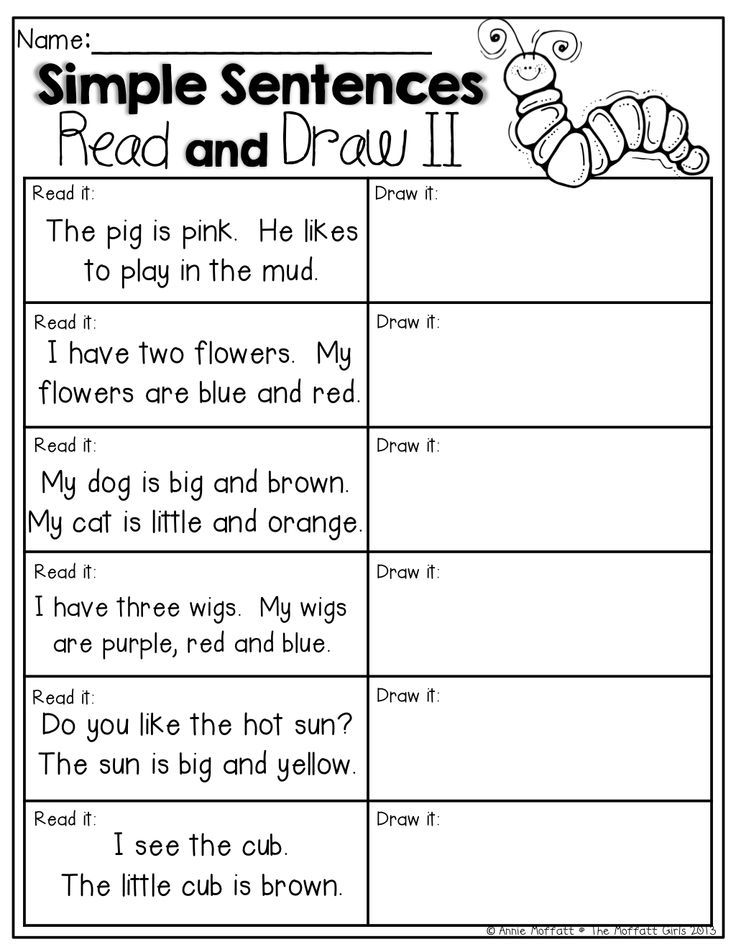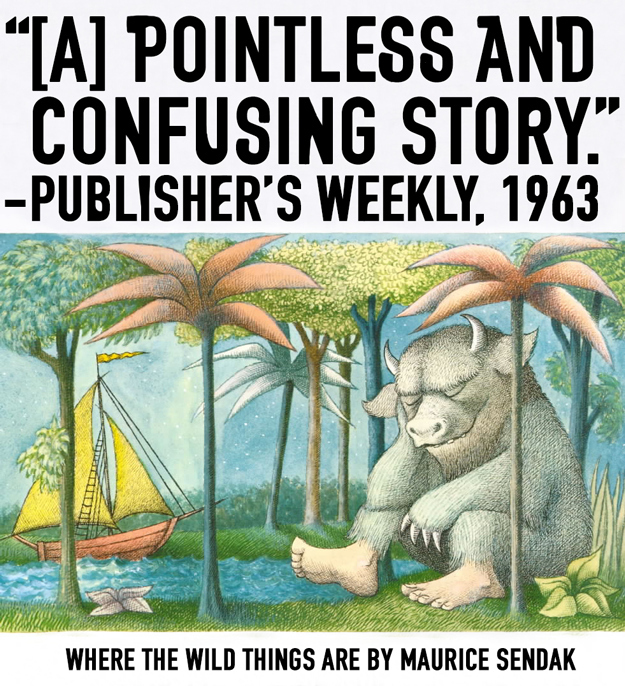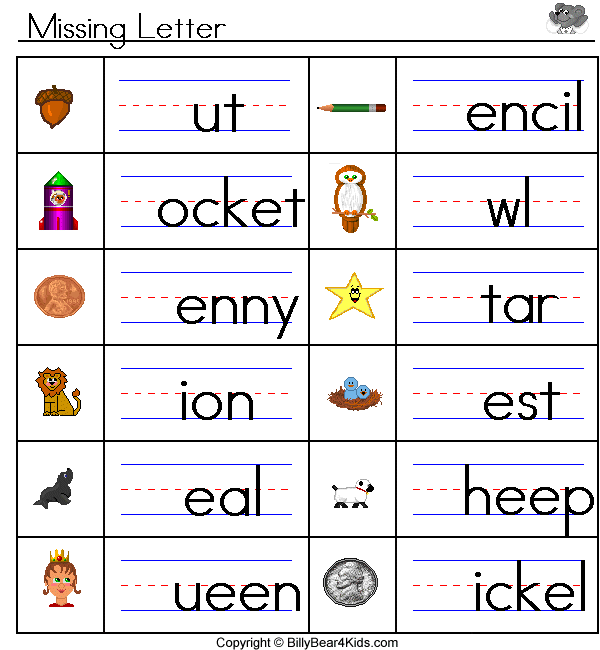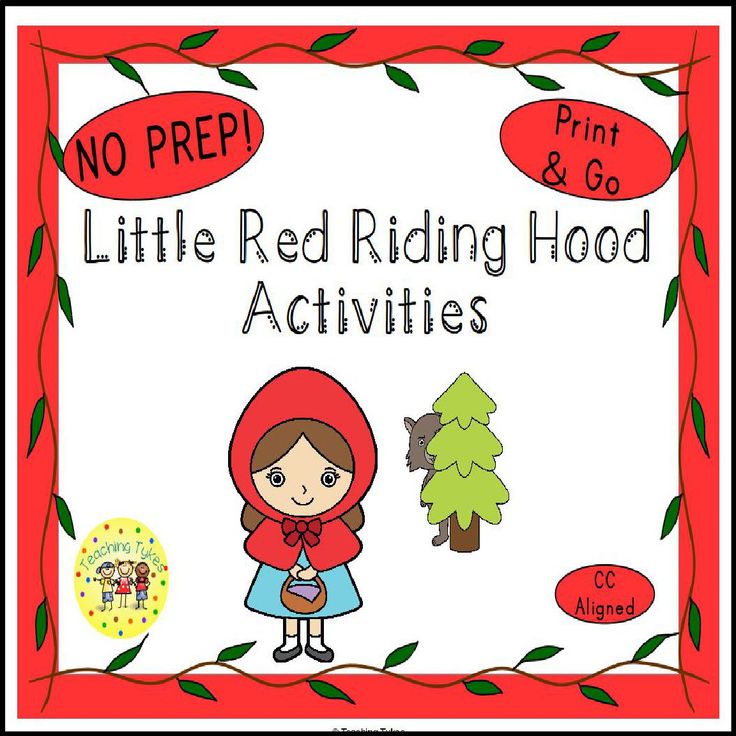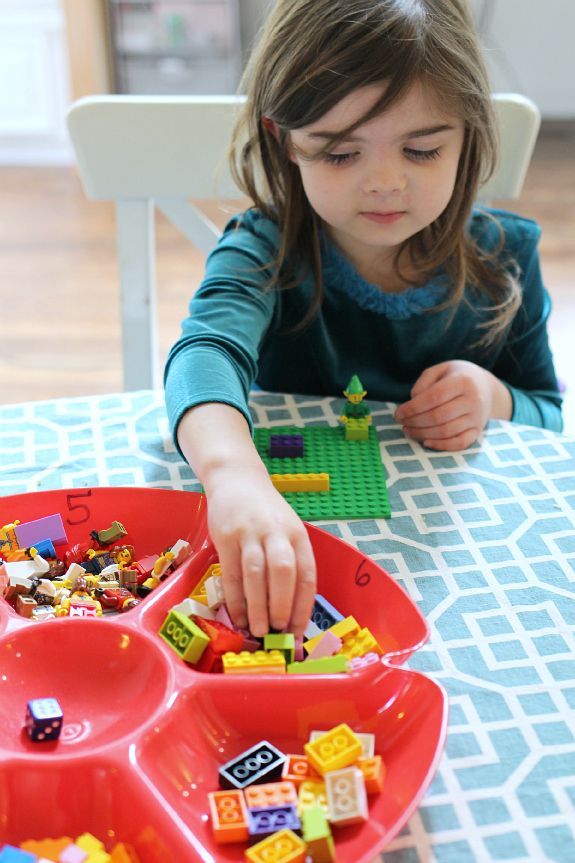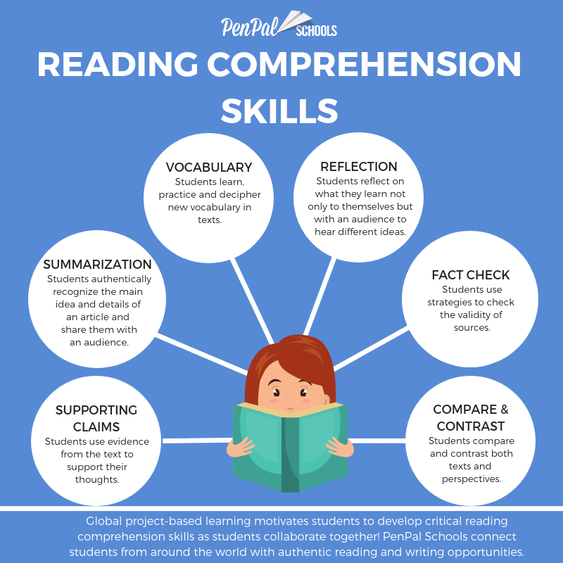Sentences for kindergarteners to read
The Best Simple Sentences for Kindergarten
There are so many fulfilling perks to teaching kindergarten, but near the top of the list is teaching students how to read. I think one of the best parts of literacy instruction is seeing the excitement in my students’ eyes when they start reading sentences! Once students are ready to take that step, it’s just a matter of keeping up that momentum and excitement with additional practice. In this post, I’m sharing some of my favorite ways to use simple sentences for kindergarten reading instruction.
Are My Students Ready for Reading Sentences?
Before we can expect young learners to read even simple sentences, it’s important to make sure they have the right foundation. The road to reading sentences includes important milestones such as:
- Identifying letters by name
- Identifying the sounds that letters make
- Blending sounds together to read words
- Reading words fluently in isolation, including sight words
Plus, between each milestone is a variety of phonemic and phonological awareness skills that need to be mastered in order to build a solid foundation for reading.
Once this foundation is in place, students are ready to begin reading words within sentences. Keep reading if you’d like to sneak a peek at the simple sentences that I use with kindergarten students when they’re ready to take this exciting step!
Simple Sentences for Kindergarten
There are many ways to practice reading sentences in kindergarten. Below are some of my favorite ways to incorporate simple sentences into literacy instruction. I love that these activities are perfect for literacy centers, morning work, small group intervention, or even homework! These activities also grow with students, so that they can read more challenging sentences as they learn more phonics patterns and master additional high frequency words.
Sight Word Fluency Sentences
When students first start reading words within sentences, it’s helpful to start with predictable text. I find that sight word fluency sentences are perfect for this!
These simple sentences often arrange the sight words in a predictable pattern, such as “I see a cat. ” and “I see a pig.” This means that students can practice decoding words within sentences while building their sight word fluency. It’s a win-win!
” and “I see a pig.” This means that students can practice decoding words within sentences while building their sight word fluency. It’s a win-win!
Read and Reveal Sentences
Hands-on activities will help students stay engaged in reading practice. Read and reveal cards are always a hit with students! This activity has students read simple sentences on a card, then unclip the flap to reveal a picture that corresponds to the sentence. Students will use their comprehension skills to decide if the sentence they read makes sense with the picture they just uncovered.
Since this adds an element of self-correction to the activity, read and reveal cards are perfect for literacy centers, morning work, or even a fast finisher activity. The fine motor practice from using clips for this activity is an added bonus!
Sentence Scramble Activities
As students grow more comfortable with reading sentences, they will start to get a feel for the natural rhythm of language and word order.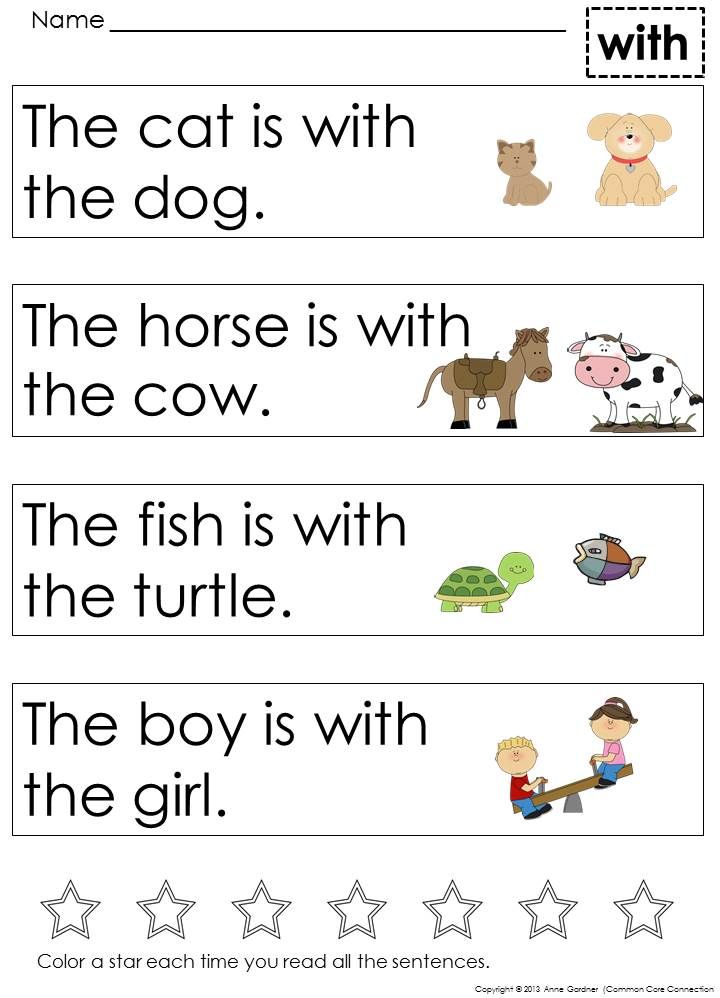 This, in turn, will help improve reading fluency. One of my favorite ways to help students understand and practice word order is with sentence scramble activities. After putting a sentence in the correct order, they can practice reading it fluently.
This, in turn, will help improve reading fluency. One of my favorite ways to help students understand and practice word order is with sentence scramble activities. After putting a sentence in the correct order, they can practice reading it fluently.
You can add some cutting practice by having the students cut out the scrambled words themselves. Plus, having the word strips available to move around helps students in the task of unscrambling each sentence.
Sentence Dictation
Writing activities are another way that I incorporate simple sentences into literacy instruction. When students write sentences, they are able to practice their phonics skills in a different, yet still very important, way. Sentence dictation is a great activity that incorporates many kindergarten skills!
After listening to a simple sentence, students will use their phonics skills to write each word in the sentence. Then they will use their fine motor skills to form the letters and words in the sentence. Finally, students will practice reading what they wrote as they decide if their written sentence matches what the teacher said. Sentence dictation doesn’t have to take a lot of time! If you have whiteboards and markers out for a different activity, do a quick sentence dictation before having the students put things away.
Finally, students will practice reading what they wrote as they decide if their written sentence matches what the teacher said. Sentence dictation doesn’t have to take a lot of time! If you have whiteboards and markers out for a different activity, do a quick sentence dictation before having the students put things away.
Sight Word Sentence Strips
This is another activity that incorporates writing as students practice reading sentences. Students can use these sight word sentence strips to practice decoding sentences fluently as they practice writing them as well.
Once these strips are laminated for durability, students can use dry erase marker to practice letter formation as they copy each sentence. This is another activity that students can work on independently during literacy centers or morning work time.
Since these sight word sentences are prepped and on binder rings, you can also take them on the go for even more practice! Use them as “password” flashcards: Have each student read a sentence from the bundle before entering the cafeteria, going outside for recess, or leaving for the day.
Kindergarten Reading Fluency Passages
Young learners get so excited when they can start reading passages with multiple sentences! This is why I love to use kindergarten reading fluency passages. Students are able to review phonics patterns and high frequency words as they improve their reading fluency and comprehension skills.
After students have had time to practice each passage in the classroom, I encourage them to take it home and read it to friends and family. They are always so excited to show off their reading skills!
Keep scrolling for information about a free reading fluency download that you can use in your classroom.
Free Reading Practice for Kindergarten
Would you like to try these reading fluency passages with simple sentences? You can grab this free collection of nine passages to share with your students. This free download focuses on short vowels, long vowels, blends, and digraphs. Each passage also includes common sight words to help build reading fluency.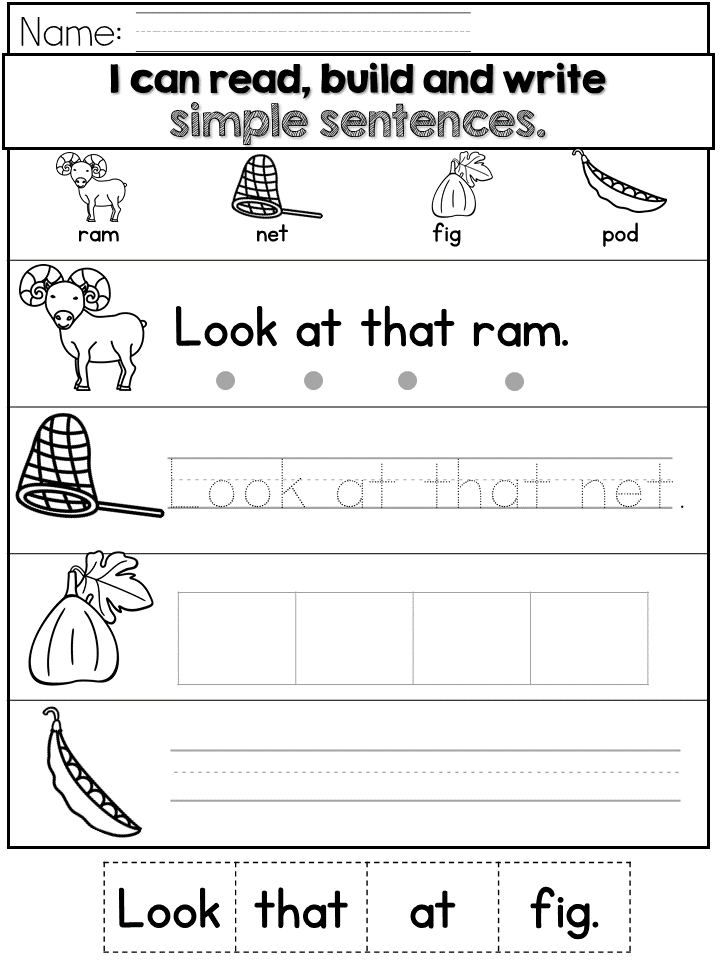 Just fill out the form below and it will be delivered straight to your inbox!
Just fill out the form below and it will be delivered straight to your inbox!
Free Reading Fluency
Help your students make the leap from sounding out words to reading with fluency! These fluency passages are designed to give kids successful reading practice to help students become strong readers!
First Name Your email addressSave These Kindergarten Sentences
Be sure to save this pin to your favorite phonics board on Pinterest! You’ll be able to come back to these simple sentences for kindergarten when your little readers are eager to give them a try.
Teaching Kids to Read and Write Great Sentences
Reading and writing literacy for our young students is one of the most important and fundamental skills to master. Building an understanding of the difference between letters, words, and sentences is a complex process. It takes lots of exposure, lots of practice, and most of all, lots of opportunities to apply what they’ve learned in meaningful ways.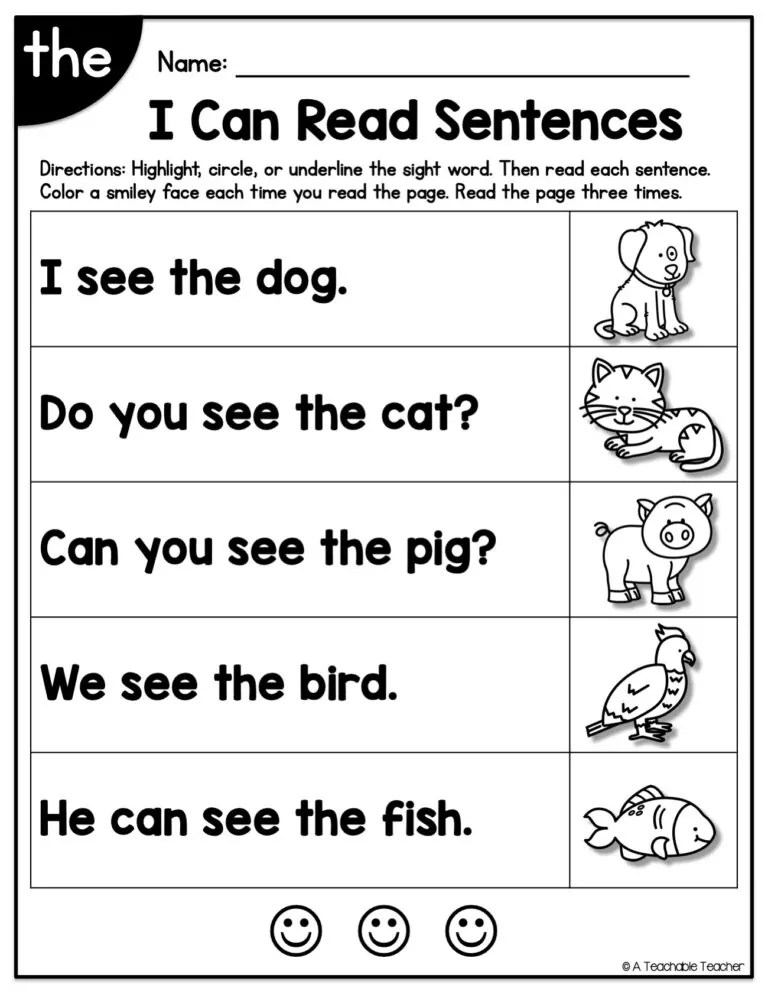
As adults, we take sentence writing for granted, but it’s really quite complex! Students have to master all of these steps:
- How to recognize letter shapes and sounds
- Understand how those letters form words with certain meanings
- Combine words to form complete sentences with different parts
- Recognize that together those parts of a sentence make a complete idea
That’s a lot! Luckily there are tons of useful strategies to help you get your students where they need to be when it comes to primary literacy.
If you have pre-readers and need resources for sight words and phonics practice, check out the resources I have in these previous blog posts:
- Reading Fluency Practice for Early Readers
- Effective Strategies for Teaching Sight Words to Primary Students
- HANDS-ON LEARNING – TRANSFORM YOUR READING INSTRUCTION & SEE RESULTS!
Once your students reach the emergent stage, they are ready to read and write sentences.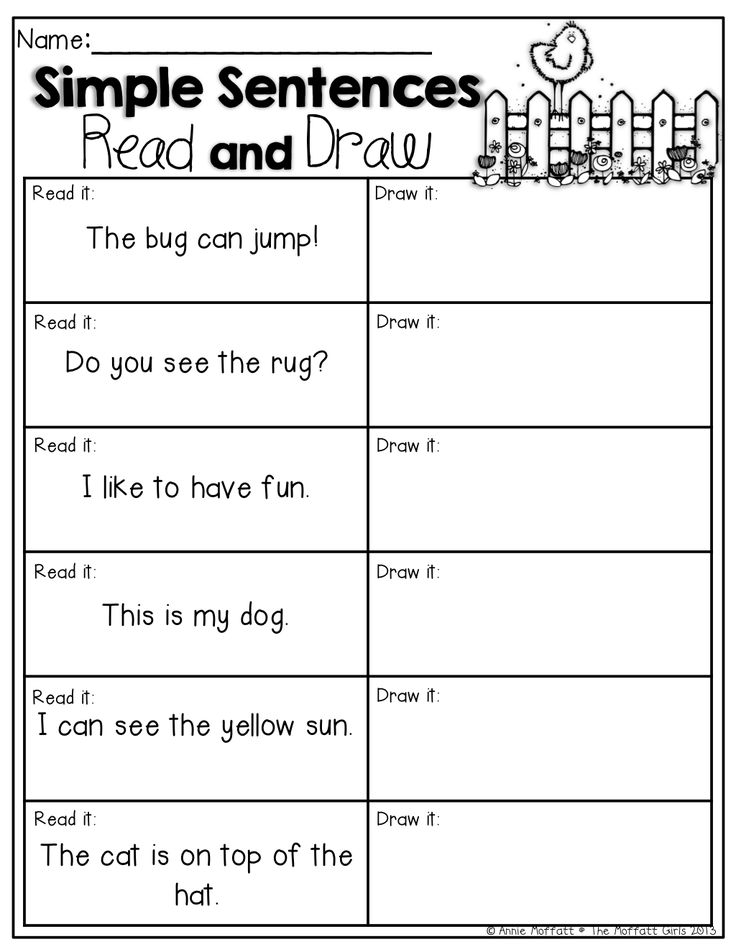
In this post, we’re going to focus on sentence building strategies and resources to help your young learners grasp the parts and meaning of sentences. Mastering the important early steps of reading and writing sentences leads to stronger writing skills later on. I’m going to share tips and strategies, plus break down the resources I have available to get you started.
A Primary Sentences Bundle You’re Going to Want to See!
There are all kinds of ways you can encourage sentence writing throughout the day in your classroom. To make it a no-brainer, I’ve created this set that includes worksheets and related hands-on activities you can use in centers later. Your little learners can keep applying what they’ve learned until they’ve mastered the skill.
There are 5 activities in this bundle that incorporate color coding, helpful reminders with icons and graphics, and spaces to practice writing sentences using Who, What, When, Where prompts. There is plenty of space for students to independently engage with the skill.
What’s Included:
Activity 1, Find a Sentence: Students color-code words and phrases as they identify the who, what, where/when parts of each sentence. The parts are already ordered in a column under the correct heading, and students will find the parts that go together to form the most logical meaning. Once they build three sentences, they pick their favorite and write it on the line.
Activity 2, Parts of a Sentence: For this activity, sentences are already written, and students will color-code the parts based on the key provided. They will identify who (red), what (yellow), when (blue), and where (green) for each sentence provided.
Activity 3, Build a Sentence: Students will look at the picture provided, and describe what they see by first identifying and writing who, what, when, and where the provided pictures are showing. Then they will combine those parts to create a sentence on the line. There are also icons to remind them to circle the capital letter, check finger spaces, and circle the period.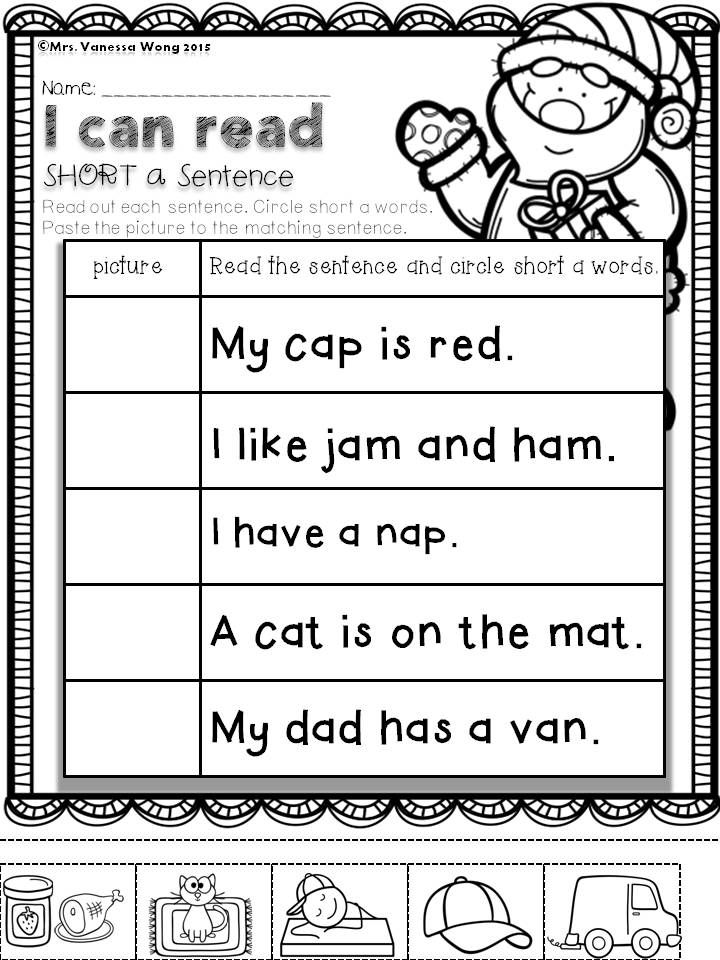 All of these checks will help students make sure they are writing the sentences correctly.
All of these checks will help students make sure they are writing the sentences correctly.
Activity 4, Write a Sentence: This activity is similar to the previous one, except that there are individual pictures for students to identify who, what, when, and where. The icons are included in this one as well to ensure that the students rewrite the sentence correctly.
Activity 5, Sentence Edits: The last activity helps students practice the skill of editing sentences. We want our little learners to understand how to edit and revise their own writing down the road. This activity features sentences that are written incorrectly. Students have to fix them and rewrite them correctly using the icons to make sure they are accurately including capitals, finger spaces and punctuation as well.
Looking for even more value?
Each set of worksheets also comes with a hands-on game. Teachers can use worksheet activities as a guided class lesson, and then use the games in learning centers when kids are ready to practice them on their own.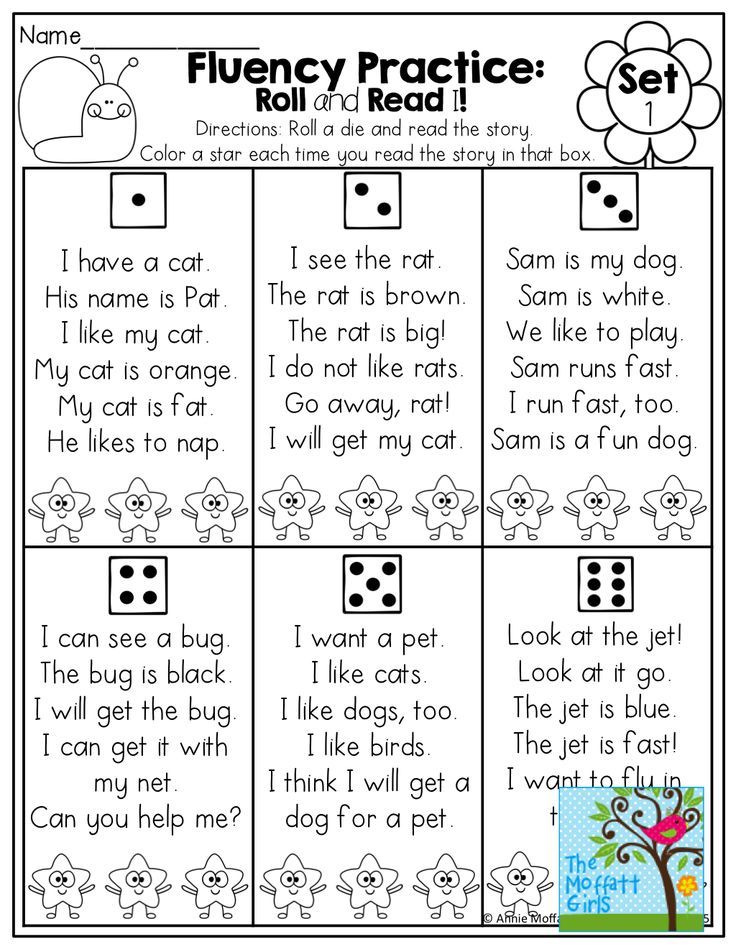
CLICK to check out the FULL Sentence Bundle!
Want more literacy resources? Have more questions or want to share what works for you and how you differentiate primary concepts in your classroom? Make sure to follow All Students Can Shine on Teachers Pay Teachers, and come visit me on Instagram or Facebook to join the conversation!
A selection of books for educators - Just Learn
As a gift for the day of the educator, which is celebrated on September 27, a selection of books on the development of preschoolers, the specifics of their learning and pedagogical methods for working with young children, from the publishing house "Educational Projects" .
Kindergarten. Debut in Russia . A book about who, how and on what basis Russian preschool education was created.
A book about the history of preschool education and about the first kindergartens in Russia in the 19th century.
Paper version of the book
Electronic version of the book
Full title of the book: “Kindergarten. Debut in Russia. The book is about who, how and on what basis Russian preschool education was created. From the works of the founders of the Russian kindergarten and the impressions of contemporaries about the affairs of Yegor Gugel, Vladimir Odoevsky, Sophia Lugebil.
The first kindergarten in Russia was opened by Mrs. Sophia Lugebil almost 150 years ago, in 1863, in St. Petersburg, at the corner of Bolshoy Prospekt and 9th line of Vasilyevsky Island.
But thirty years earlier, in a small house in Gatchina Park, at the own expense of two young teachers for ten boys from four to six years old, a small school was opened - a school is not a school - it seems to be a school by name, however, intended not for teaching, but for giving " the right direction in the development of children's abilities.
Between these two events lay an almost unknown era of amazing searches, experiments and efforts, when the foundations of Russian preschool pedagogy were laid.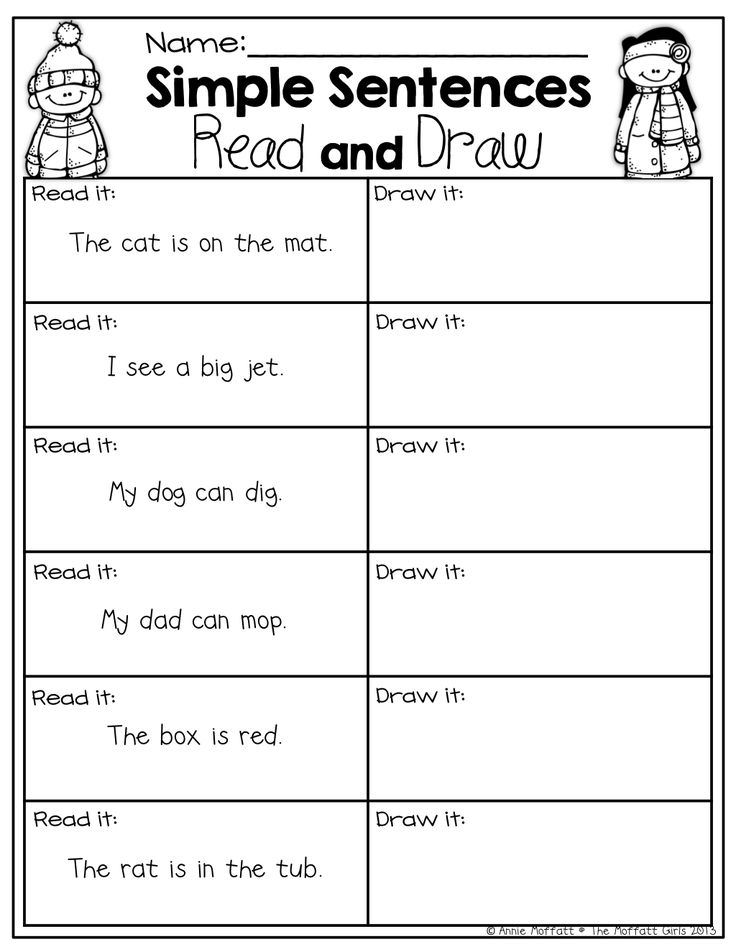 The cheerful wisdom of its founders allows us to see in their experiences and insights not only the origins, but also the horizons of an ideal kindergarten.
The cheerful wisdom of its founders allows us to see in their experiences and insights not only the origins, but also the horizons of an ideal kindergarten.
Compiled by: Rusakov A.S.
Bukatov V.M.
Handbook for educators with business explanations, unexpected hints and true stories on social and playful ways of conducting classes in senior and preparatory groups of kindergarten.
A book about socio-playing techniques and approaches that combine the achievements of theatrical and folk pedagogy.
Paper version of the book
Practice-oriented monograph by V.M. Bukatova is devoted to the key tasks of preschool education. It reveals the diverse ways of pedagogical searches for harmonious and individual for each educator combinations of traditional and innovative approaches to work.
This book will help get rid of dry patterns and make the mutual joy of communication between adults and children permanent and familiar.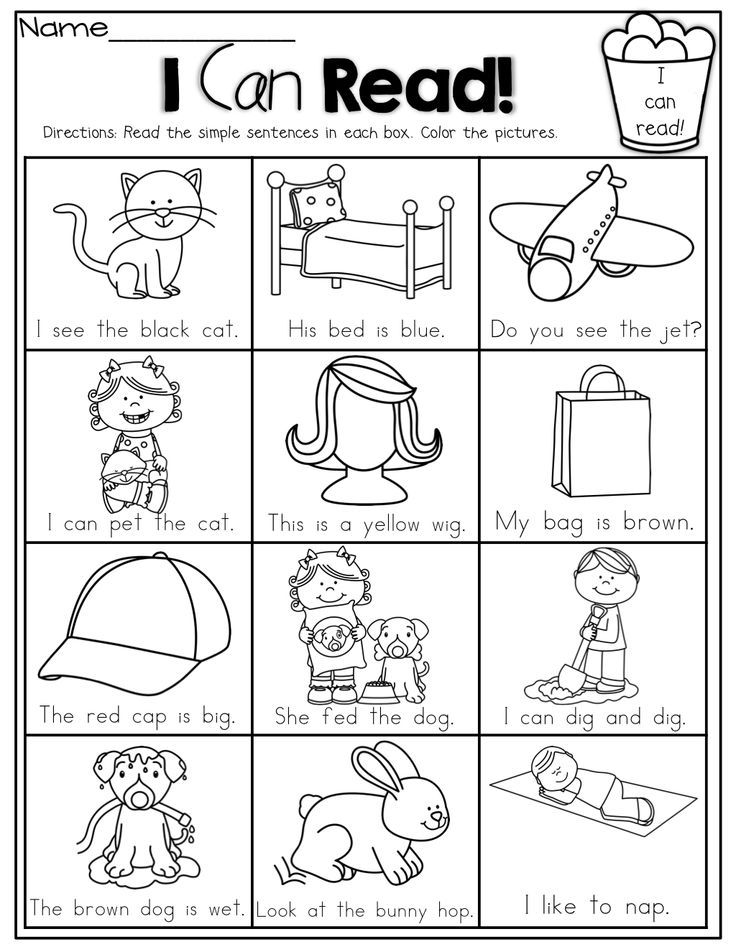
To revitalize classes in kindergartens, educators are offered socio-game approaches that combine the achievements of theatrical and folk pedagogy.
The book pays special attention to the topic of how each educator can find a common language with children.
Krylova N.M.
How to grow an architect of your own life, or Designing, building and directing play for preschoolers.
The book of the creator of the pedagogical system "Kindergarten - House of Joy", about the development by the child of "construction" activities and the laws of architecture from year to year, establishing cooperation between children and other aspects of the life of a preschool group.
Paper version of the book
Electronic version of the book
This book reveals the possibilities of designing and building play in the life of preschoolers - both in kindergarten and at home. The book shows the logic of the child's practical mastering of "construction" activities and the laws of architecture from year to year.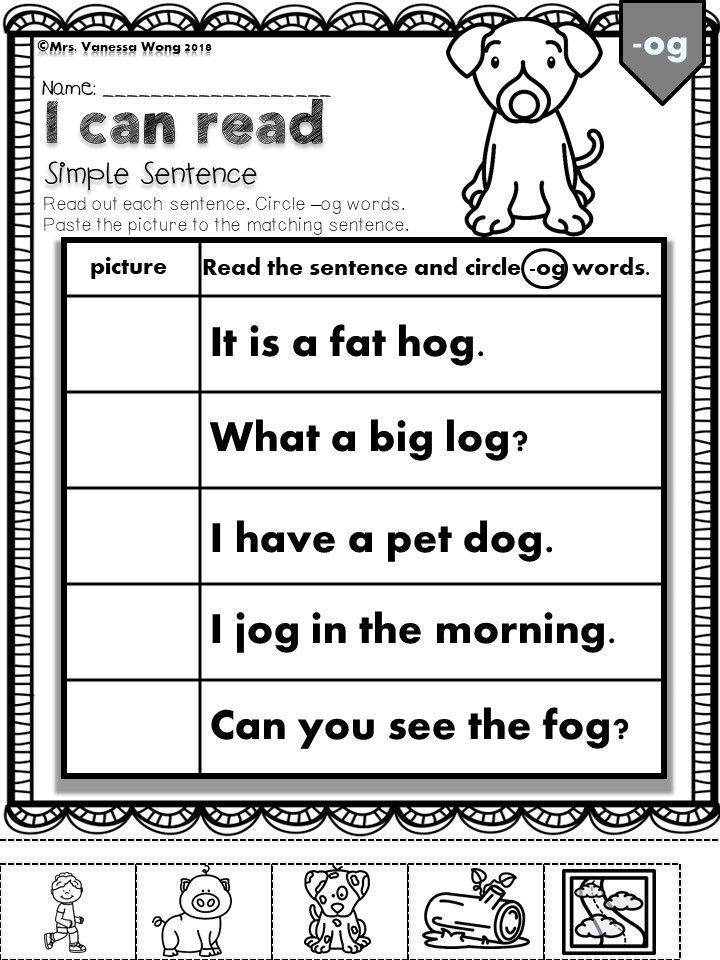 The book makes a clear connection between children's construction and many aspects of a child's life. Against the background of the chosen topic, the book tells about ways to establish cooperation between children, and about fostering a caring attitude towards others, and about the children's passion for the mysteries of nature, amazing cultural phenomena, and the patterns of interaction between people in society.
The book makes a clear connection between children's construction and many aspects of a child's life. Against the background of the chosen topic, the book tells about ways to establish cooperation between children, and about fostering a caring attitude towards others, and about the children's passion for the mysteries of nature, amazing cultural phenomena, and the patterns of interaction between people in society.
In addition to practical advice on activities with children, the book contains many tips for adults related to the art of communication and cooperation with preschoolers.
The author of the book is the creator of the original pedagogical system "Kindergarten - House of Joy", where the traditional values of preschool education for our country are combined with innovative approaches to the organization of pedagogical work.
Ivanova O.L., Vasilyeva I.I.
How to understand a child's drawing … which is not art, but the study of oneself and the world.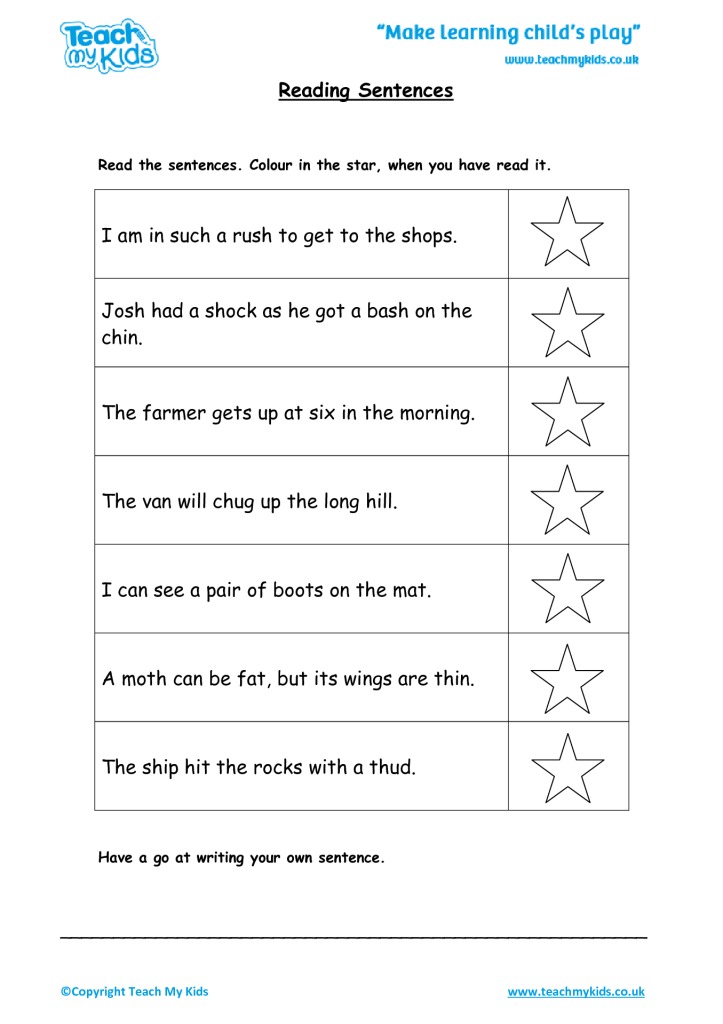
A book about the age characteristics of children's creativity with examples of activities that involve different levels of independence of the child.
Paper version of the book
Electronic version of the book
The first part of the book is devoted to a discussion of the stages through which the creativity of children naturally passes in the first five or six years of their life; and the second part - options for classes and methodological recommendations, divided into several groups depending on the degree of the author's independence of the child.
The authors of the book offer exercises for classes that allow kids to find a special solution in each case and create a unique one! and expressive image. The book shows adults how to evaluate the effectiveness of the creative efforts of preschool children not from the point of view of "correct drawing" - but from the point of view of the development of children's individuality, the ability to creatively transform the world.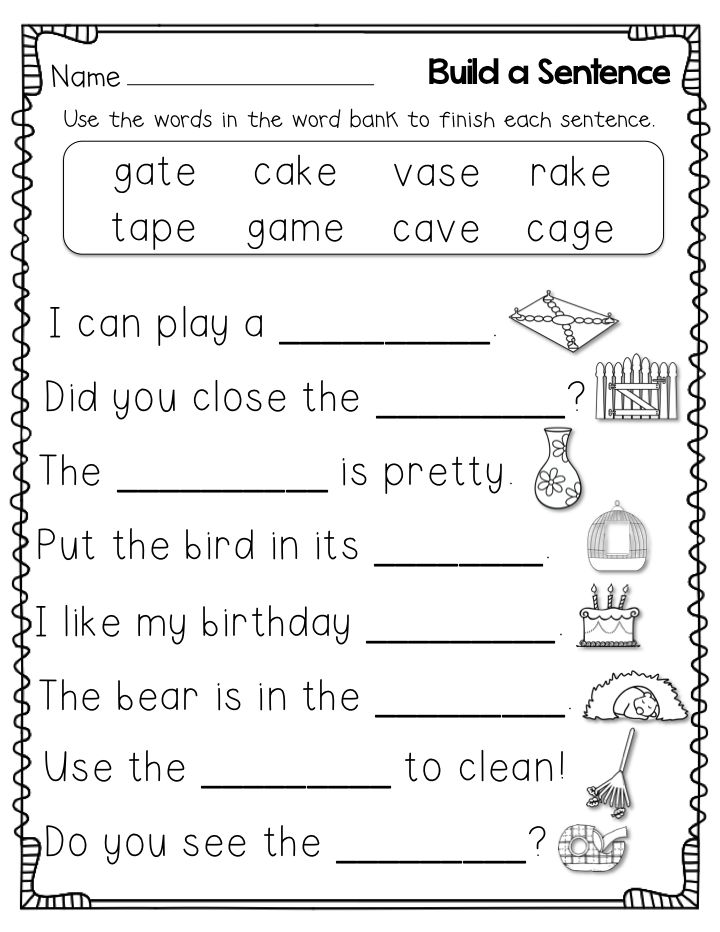
Poddyakov N. N.
Mental development and self-development of a preschool child. near and far horizons.
A book by an academician of the Russian Academy of Education about experimental and play activities, "exploratory" behavior, "clear" and "obscure" knowledge, "near" and "far" horizons of child development.
Paper version of the book
Electronic version of the book
The book in a popular science form represents an integral system of modern scientific ideas about preschool childhood, formed on the basis of domestic psychological research over the past fifty years. The author of the book, N.N. Poddyakov - Academician of the Russian Academy of Education, an outstanding Russian psychologist of preschool childhood, director of the Research Institute of Preschool Education of the Academy of Pedagogical Education of the USSR (1980-1992). The combination of fundamentality, thorough scientific validity of the author's theses and the unexpectedness, paradoxical nature of many conclusions makes this book interesting not only for preschool teachers and psychologists, but also for everyone who needs to understand the key patterns in human education. N.N. Poddyakov covers the issues of experimental and play activities of the child in a fundamentally new way, reveals the mechanisms of the preschooler's exploratory behavior, explores the relationship between "clear" and "obscure" knowledge, "near" and "far" horizons of child development.
N.N. Poddyakov covers the issues of experimental and play activities of the child in a fundamentally new way, reveals the mechanisms of the preschooler's exploratory behavior, explores the relationship between "clear" and "obscure" knowledge, "near" and "far" horizons of child development.
3rd revised edition.
councils of educators / City news / Moscow website
Education Mos.ru
On September 27, educators and other preschool workers celebrate their professional holiday. Experienced teachers told mos.ru that it is important that going to kindergarten does not become a punishment for the whole family, but brings joy. The first trip to kindergarten or returning there after the summer holidays is not the easiest time for children and their parents. Whims, tears, quarrels and disputes leave few people indifferent and add stress to family everyday life. But, fortunately, there are many pedagogical and psychological techniques that will help you more easily survive this state and adapt to new conditions.
Experienced teachers of Moscow kindergartens, who celebrate their professional holiday on September 27, shared their secrets of mastery. They gave parents and their colleagues some practical advice that will help them understand each other better and support their children.
Family climate control
When parents decide to send their child to a kindergarten, the main question is how he will cope there, not knowing how to seem to be elementary things. Not knowing how to use the potty, dress, eat calmly, or study diligently. He frantically begins to teach everything at once. Although experts do not consider this to be the main thing. According to them, it is important to prepare the child for kindergarten psychologically , and the rest will come with time.
Such training should be based on love and understanding, says Svetlana Tulaykina, an educator with 17 years of experience. “If a child has confidence in the world, if the family loves and accepts him, then he will feel protected, he will be able to calmly enter the children's team and accept a new adult,” says the teacher of school No.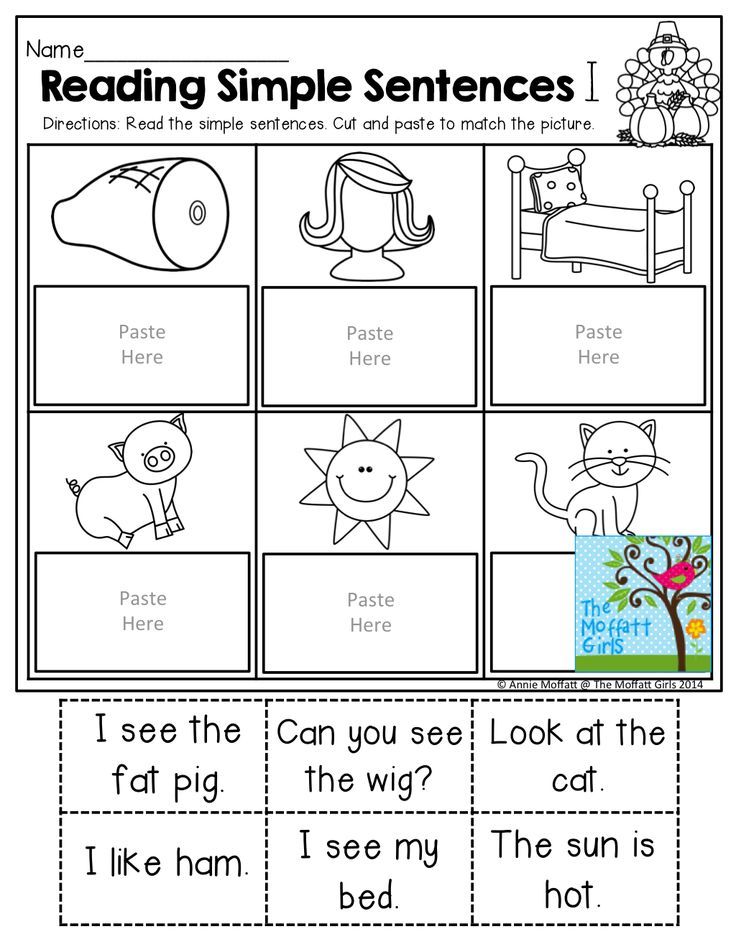 236.
236.
challenge to grow up in one day , says Yulia Yakubovich, teacher of the preschool department of school No. 1357 "On Bratislava", which last year won the title of "Teacher of the Year".
“You are big now, go to kindergarten, stop wearing diapers and throw away the pacifier!” It is difficult to adapt to such drastic changes. It is enough for a baby to start with the fact that he is in a new place and without his mother. The rest can be done later. At first, it is necessary to reduce stress factors, ”she notes.
Going to kindergarten is compared to changing jobs for an adult. The child also experiences excitement, anxiety, fear of the unknown. Only for him they are three times stronger. So, first you need to create a comfortable psychological climate. « It is important to help a child not be afraid of a new environment, to teach them to interact calmly and confidently with their peers. Parents can create an environment suitable for this, come up with situations of mutual assistance, interesting game moments, ”says the teacher of the preschool department of school No.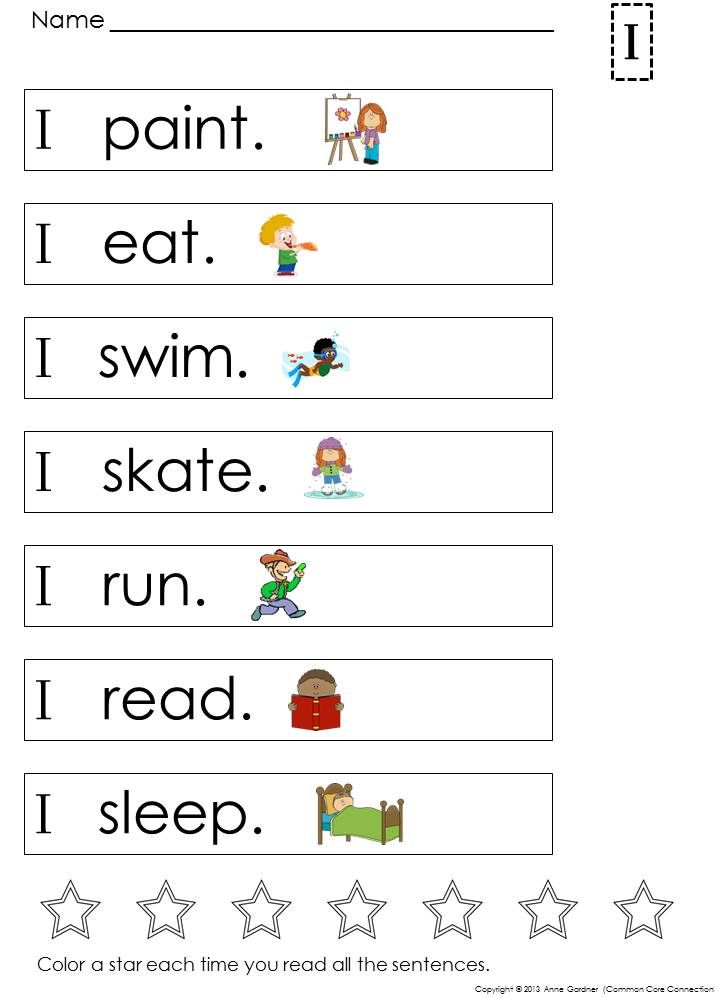 354 named after D.M. Karbysheva Daniil Semichev.
354 named after D.M. Karbysheva Daniil Semichev.
Acquaintance with a new world
Teachers recommend starting preparations for the garden with stories about what kind of place it is. At first, you can just walk nearby, watch how the children play on the playgrounds, communicate with the teacher, and how they are taken home. Svetlana Tulaykina advises to play in the kindergarten at home: choose toys, one of which will become a teacher, and the rest - children. They will help show ordinary situations: lunch, quiet time. So you can gradually form a clear image of the kindergarten. " Be sure to adjust the daily routine to the one that will be in kindergarten. Roughly imagine what menu will be in there, and cook the same dishes at home. Usually, a summer is enough for such training,” says Svetlana Tulaykina.
The adaptation process is individual: it all depends on the child's ability to communicate, personal characteristics and his environment.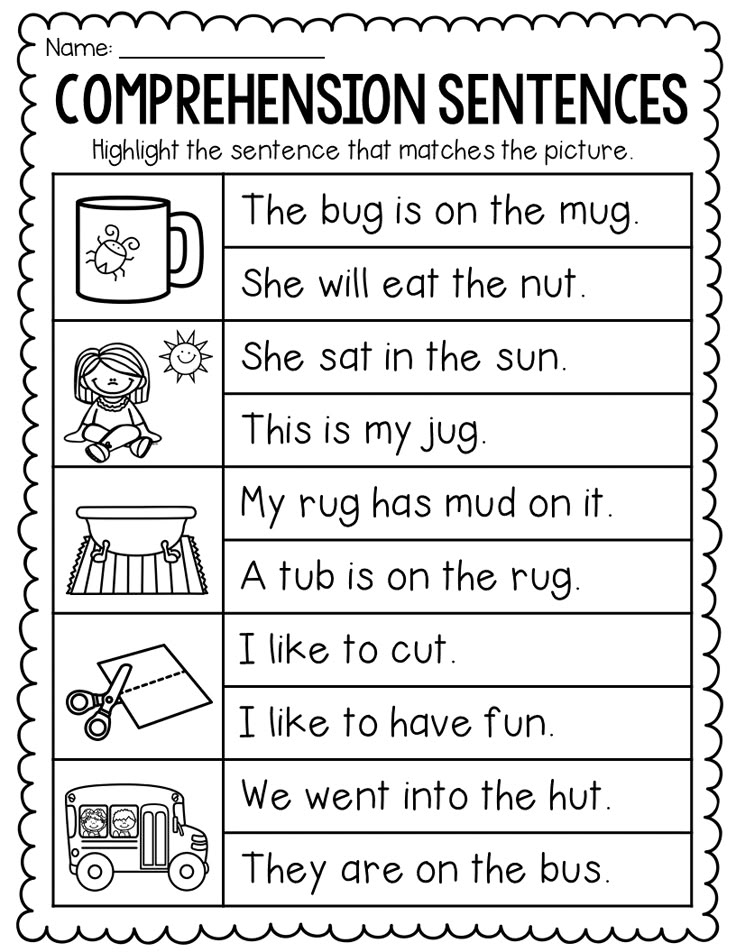 “If he communicates regularly with other children, as a rule, adaptation is faster. But more often there are children who need a gentle process. When at first they are brought in for a few hours, they are gradually introduced to the premises and educators, who must set the child in the right way, ”says Daniil Semichev.
“If he communicates regularly with other children, as a rule, adaptation is faster. But more often there are children who need a gentle process. When at first they are brought in for a few hours, they are gradually introduced to the premises and educators, who must set the child in the right way, ”says Daniil Semichev.
According to Yulia Yakubovich, there are children who are ready to stay in the kindergarten for the whole day almost immediately, and there are those who should be picked up in an hour. And teachers don't see anything wrong with that. There are special techniques that will greatly help families. “Bring not Petya or Dasha to the garden, but a doll or a bunny. Show him toys, a locker, guys with your child, and then put him to sleep on a beautiful bed. The next day, Petya and the bunny will stay in the kindergarten together, and then they will tell their mother how the day went. Let a bunny go to the kindergarten, and Petya will be in the role of an adult who takes care of him, ”Julia shares.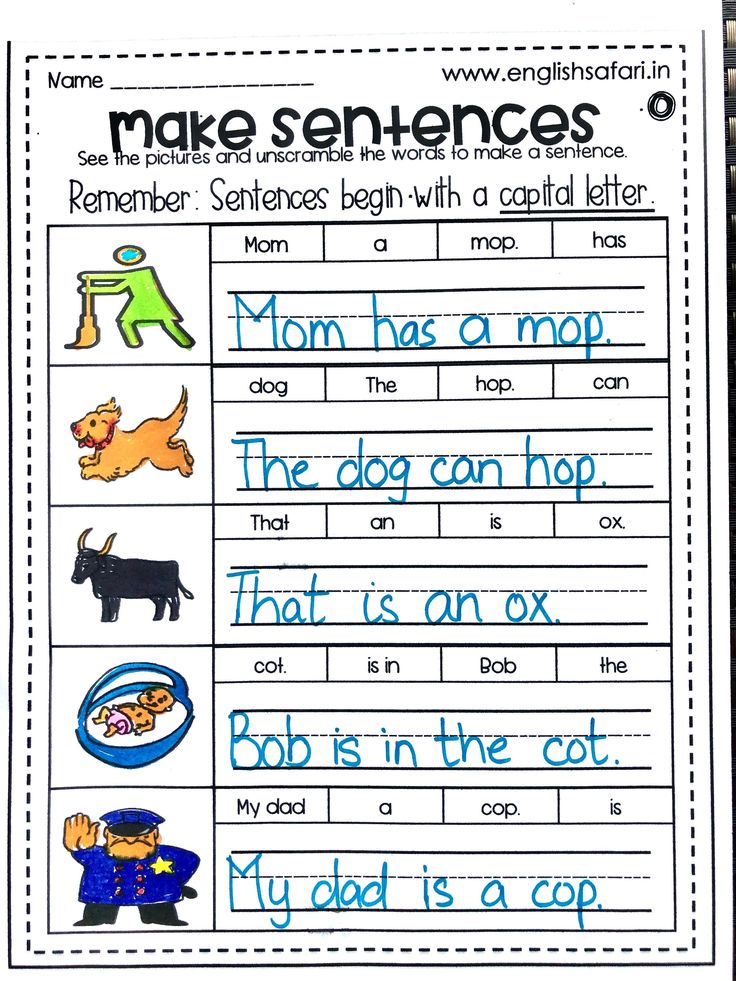
How long it takes to adapt depends on the individual case. If the baby did not stay with anyone except his mother, he will not get used to kindergarten right away. “Such a child is smoothly introduced into a new regimen. At first, you can come not in the morning, but for an evening walk, so that he can see that the children are being taken home and no one is left in the kindergarten. Literally in 10–15 minutes, he will be able to understand that it is safe and interesting here,” says Svetlana Tulaykina.
Definitely no
When everything goes according to plan, the child gradually gets used to the new place and surroundings, it becomes easier to let go of the mother, the tears go away, and the reactions become calmer. To understand whether this is so, the behavior of the child will help. If he starts to give a hand to the teacher, goes to his arms, does not reject, then the adaptation is going smoothly, with benefit and the desired results, says Daniil Semichev.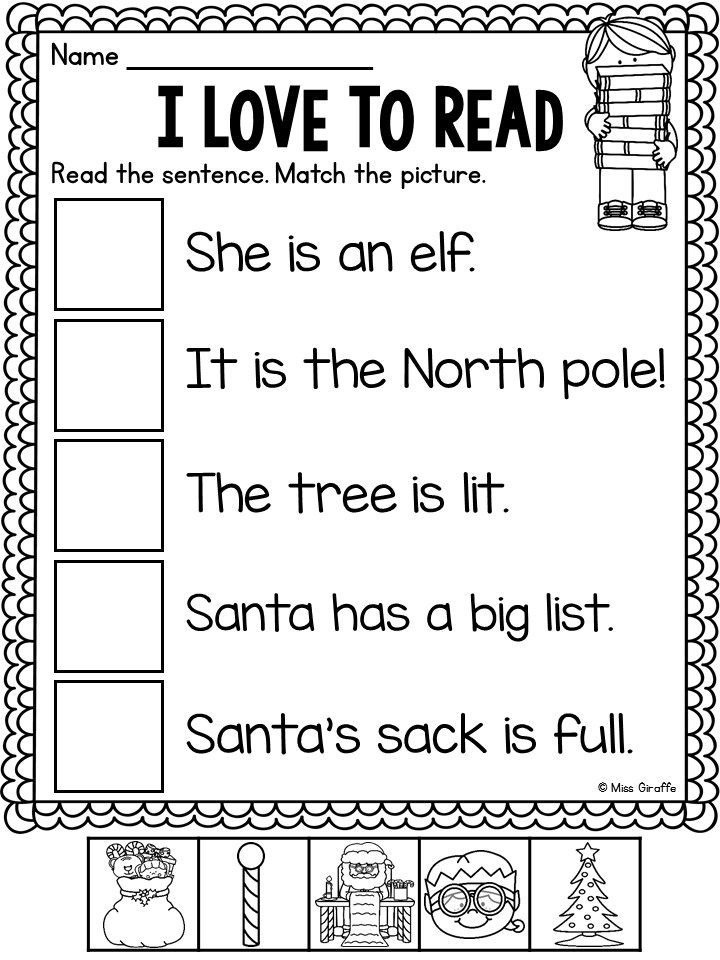
At the same time, the child can still sometimes be capricious and say that he does not want to go to the kindergarten. And such situations should also be taken calmly.
“In a conversation, it is important to set the child up in a positive way. On the way home, you need to ask him what was the day, and look for as many positive moments as possible in his words. And the teacher can also interest the child in what will happen tomorrow. We can say that nothing will work without him, that he is a real assistant to the educator, focusing on his strongest points,” notes Daniil Semichev.
If the child categorically refuses to go to kindergarten, the reason must be found. Maybe it's just hard for him to part with his mother. It is worth trying to talk to the child: for example, offer to show the teacher and the children what beautiful new clothes he has. Gradually it will be easier to leave. Playing situations will help to figure out other reasons - you can ask the child what he did, with whom he played (naming the names of the children), what fairy tale the teacher read, what they ate for lunch and about something else.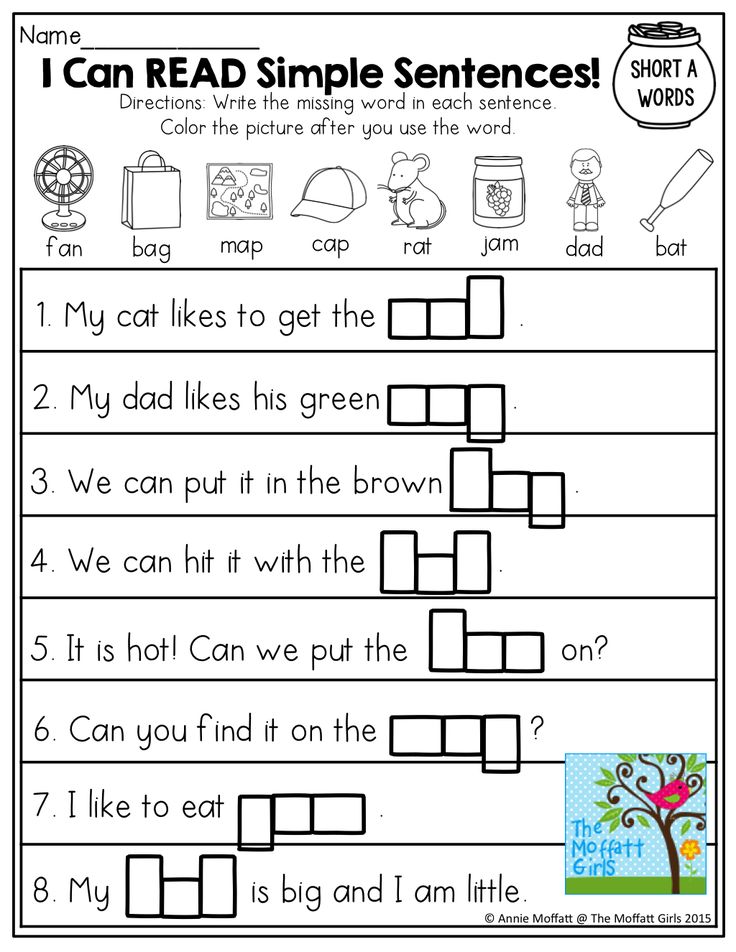 “It is important to bring the child to positive emotions during the conversation. When a mother asks about the negative, the child understands that she is interested, which means that she needs to think and talk about it, ”advises Svetlana Tulaykina.
“It is important to bring the child to positive emotions during the conversation. When a mother asks about the negative, the child understands that she is interested, which means that she needs to think and talk about it, ”advises Svetlana Tulaykina.
At the same time, if parents meet the hysteria of a child who does not want to go to the garden and turn around home, then nothing good will come of it. This will be repeated frequently. “On such a day, it is better to pick up the child earlier if it is very difficult for him. He must understand that hysteria is not an option. I think that the educator will meet halfway and give the child a little more attention, ”adds Svetlana.
Secrets of parting
Experts say that the most problematic moment is when a child separates from a parent — when you have to say goodbye in the locker room and go in different directions. Then it is easier for the group to get distracted and switch. A farewell ritual can help here.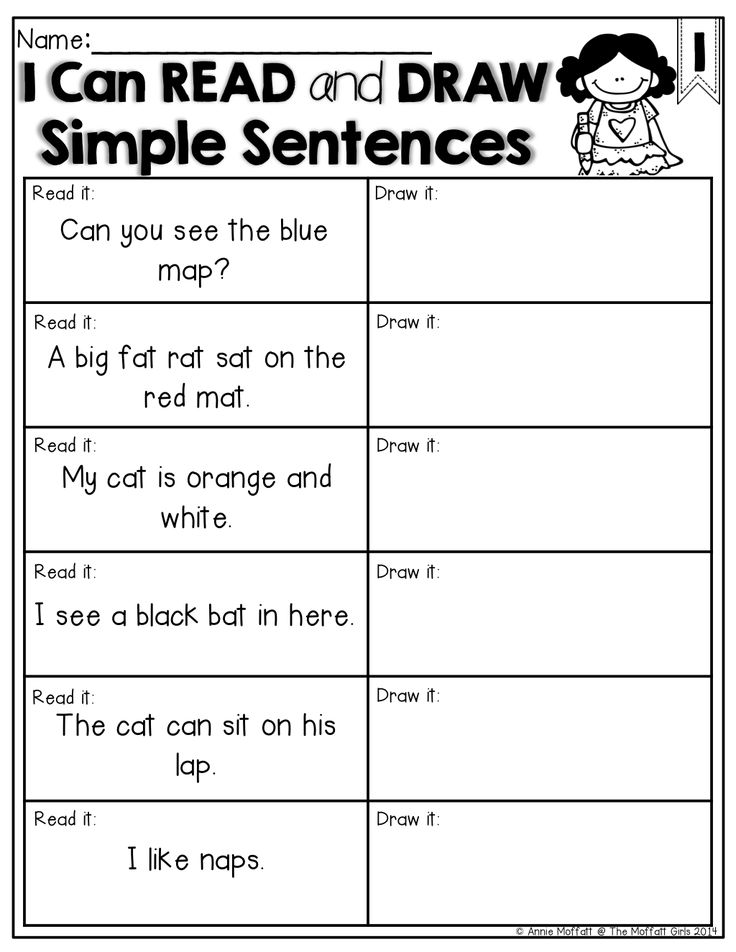 One of the well-known tricks is called the “kiss in the pocket” or “kiss in the palm”: the mother kisses the child on the palm, he can “put” this kiss in his pocket or locker, where he will be stored while the baby is in kindergarten. You can also give him a toy or a handkerchief that smells like home - everyone will have something of their own. And then the mother will say when she comes, and the child will wave his hand at the door or from the window.
One of the well-known tricks is called the “kiss in the pocket” or “kiss in the palm”: the mother kisses the child on the palm, he can “put” this kiss in his pocket or locker, where he will be stored while the baby is in kindergarten. You can also give him a toy or a handkerchief that smells like home - everyone will have something of their own. And then the mother will say when she comes, and the child will wave his hand at the door or from the window.
All positive attitude can disappear in the locker room where the children are crying in unison. In such a situation, educators are advised to choose another time to join the group - a little earlier or a little later than strongly crying classmates. On the way, it is worth discussing this with the child: to tell that other children may not yet understand how fun it is in a group. And according to Daniil Semichev, children who adapt more easily can be taken as assistants to the educator so that they attract crying children to the game.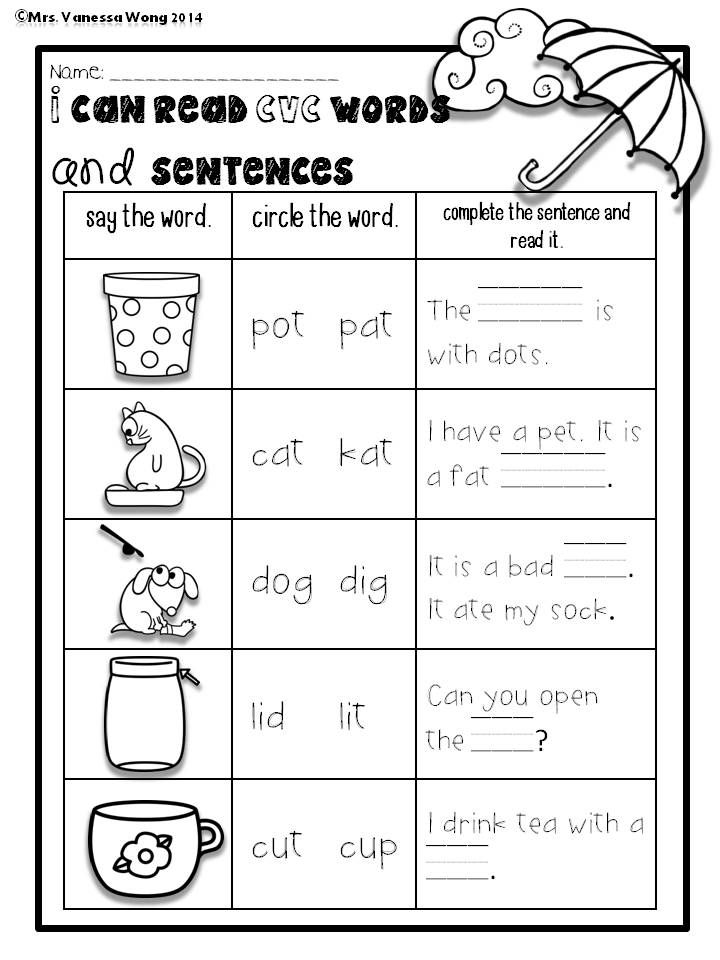
Conflict of interest
In a group of children, as in many adults, conflicts are not uncommon. Especially in the early days, when the kids are not yet very familiar with each other and the new rules. The task of parents is to understand the cause of the problem, support the baby and teach new ways of expressing feelings, not to bite and fight, but to play together and negotiate, says Yulia Yakubovich.
Another helper is fairy tale therapy. You can read a book together with your child, where there are moments illustrating the situation. This should be done emotionally, but calmly reacting to the behavior of the hero. And then you need to analyze the text together.
“Answer the questions: what was done wrong, was the offender pleased that you felt in his place, remember, we had the same situation, let's think about whether your behavior was right? When a child looks at the situation from the outside, it will not cause psychological damage to him and will allow him not to repeat negative actions, ”says the teacher.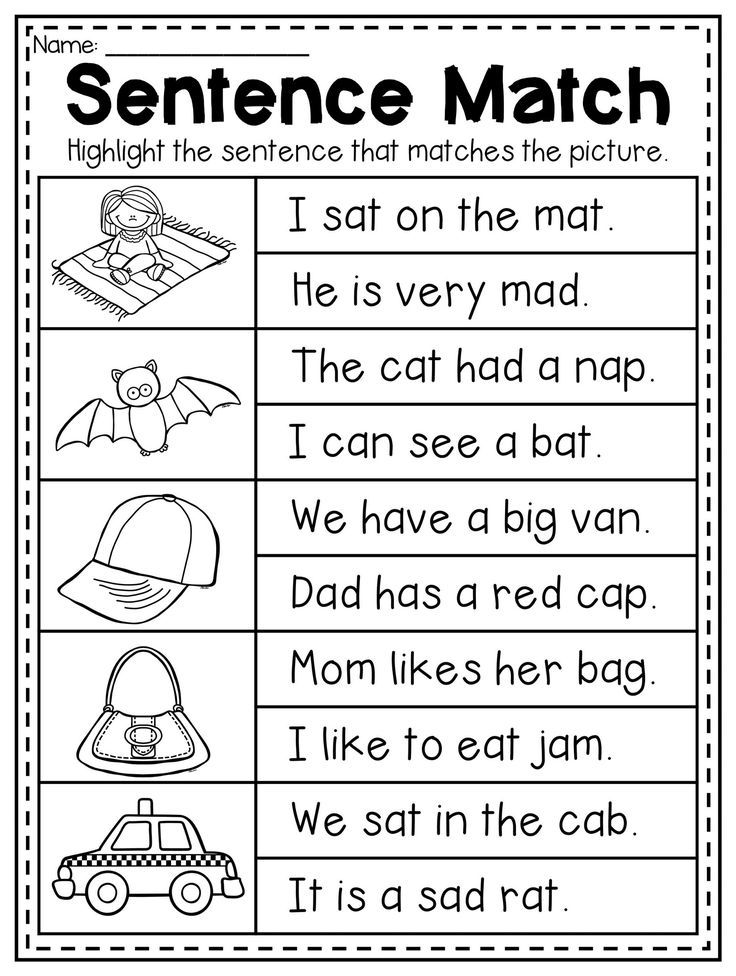
According to Svetlana Tulaykina, it is important to ask how you felt, why do you think the other child acted this way. “It is necessary to analyze the situation and help to survive it. At the same time, try not to go into negative directions, but to understand, listen and suggest how to proceed further, ”says Svetlana.
Experts repeat: it is impossible to make a child never get upset at all. “Kindergarten has its own regime, where you have to adapt to others – all this is not the same as with mom. The child experiences different sensations and emotions. But children who have a fairly stable psyche go through this process normally, ”recalls the educator.
Parent training
Kindergarten is a new stage for the whole family. Parents need preparation for it just as much as their children, and maybe even more. “Children usually go to kindergarten for the first time with a desire and great interest. The main thing is to support this mood in the child.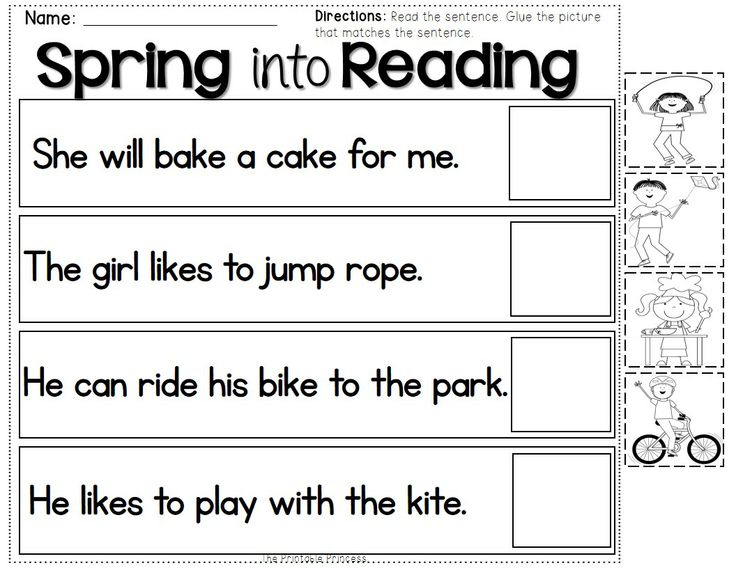 And the parents themselves should not worry, ”advises Yulia Yakubovich, who will also soon have to go through all the stages of adaptation with her second child.
And the parents themselves should not worry, ”advises Yulia Yakubovich, who will also soon have to go through all the stages of adaptation with her second child.
Today, educators communicate with parents and send them photos using gadgets. “Parents like it, and they are calm, and if mothers are calm, then the children are fine!” Julia adds. She recommends preparing yourself in advance for parting with children, and starting to accustom them to new people as early as possible. “Let guests come to you, relatives come. This will help the child to socialize faster and not be afraid to be left without a mother, and parents to be calmer. Trust teachers more, they are professionals in their field! There are no random people in this profession,” says the teacher.
It is necessary to create a strong and most important tandem in this situation between teachers and parents. “It is important for parents to listen to educators, who, as a rule, are knowledgeable and prepared people. The educator must receive and analyze information about the child and advise the parent on techniques that will help at home, ”says Daniil Semichev. According to him, it is important for parents to tell as much as possible about the child - his environment, habits, taste preferences. Then the teacher will be able to better navigate and help.
The educator must receive and analyze information about the child and advise the parent on techniques that will help at home, ”says Daniil Semichev. According to him, it is important for parents to tell as much as possible about the child - his environment, habits, taste preferences. Then the teacher will be able to better navigate and help.
Mustachioed nannies: four interviews with unusual kindergarten teachers
Professional first aid
Techniques for easy adaptation can be found on Internet resources, in expert publics, and special literature. Svetlana Tulaykina, for example, recommends Anna Bykova's book “My child goes to kindergarten with pleasure!” to parents. She helped caregiver during her third child's kindergarten preparation. Prior to this, Svetlana had to face the difficulties of adapting her middle daughter - they lasted about two years. In difficult situations, Svetlana recommends that parents figure out why the child is having such a hard time and, if possible, take a step back - take the child back to the group for only a few hours.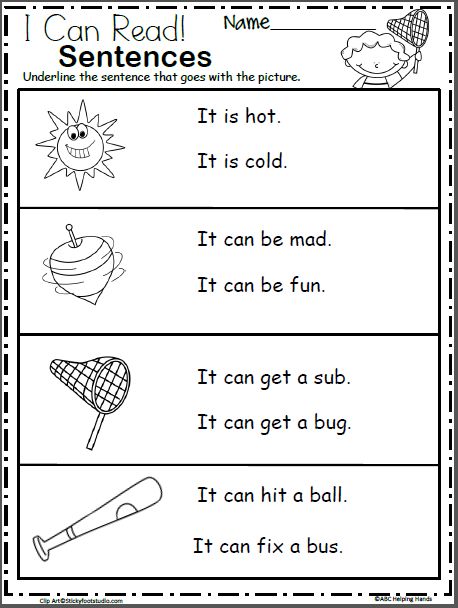
Educators-psychologists who always accompany children in the kindergarten will help to find the cause of the problem faster. By joining forces, the educator, psychologist and parents will definitely find a suitable solution together, notes Yulia Yakubovich. In this case, the child will not have to put pressure.
« The child is not to blame for anything, everything depends on the environment in which he is. Therefore, it is important to act as much as possible in his favor. If the adaptation process is difficult and long, it means that his body requires it. It happens that there are no special problems, good contact has been established with the teacher, but the child psychologically does not accept kindergarten. You need to work at his pace, use different techniques and act progressively. Sometimes, changing the group is enough to solve the problem. Perhaps the situation will immediately become different, ”adds Daniil Semichev.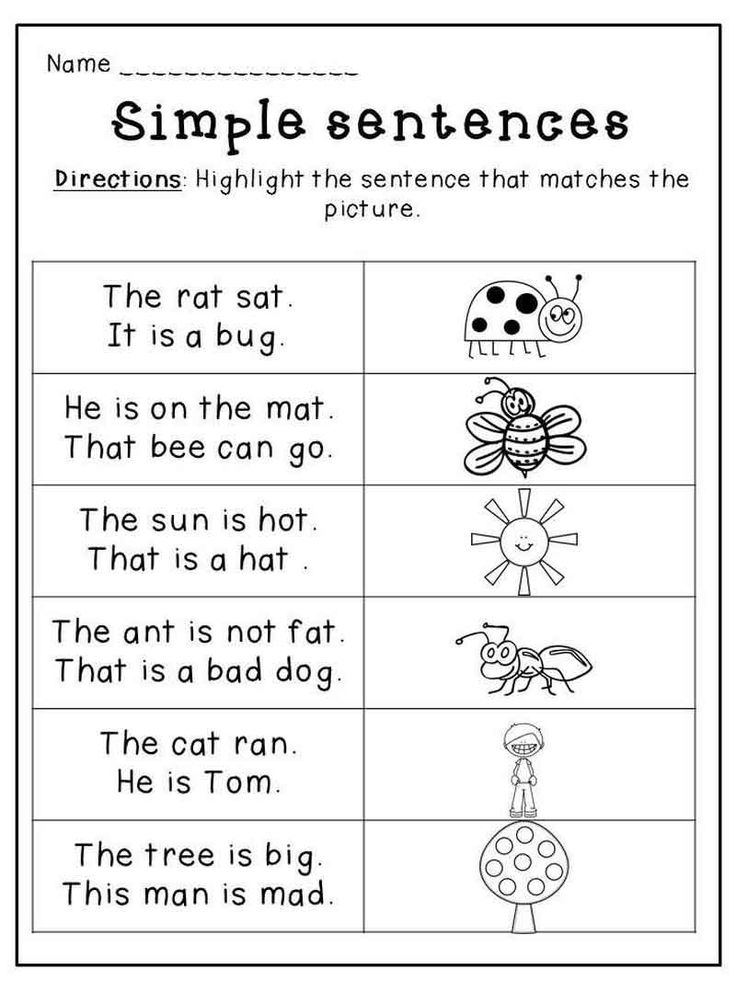
Tips for caregivers
Caregivers who receive a new group of kids also need their own adaptation. They also get used to the team, get acquainted with the interests and characteristics of each. This will be helped by several recommendations given to colleagues by our interlocutors.
To reduce the worries of parents, Svetlana Tulaykina advises getting in touch with them in advance using instant messengers or social networks. The teacher told about a case from practice that instantly removed many parental fears: educators, knowing that a younger group would come to them, recorded a video in which they told about themselves and the group. “They showed what beds and toys are there, how clean and bright it is, how they are waiting for the children. Parents saw that their children were thought about and cared for, and it became much easier for them,” Svetlana explains.
Another technique helps children get used to new circumstances, for whom phrases like “mom will come soon” or “mother will come after dinner” sound very abstract.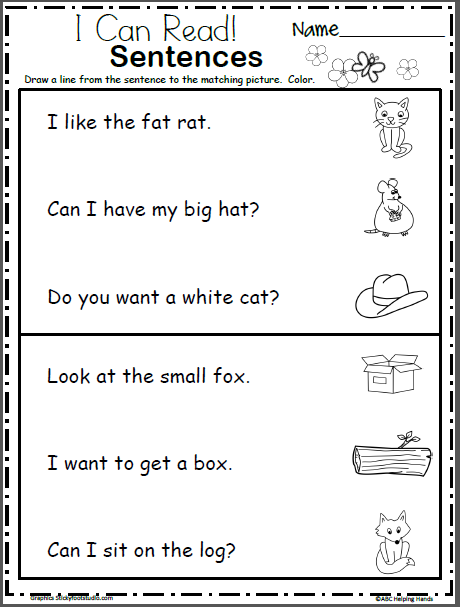 “In the group, we hang a calendar with pictures or photos of children. On one they wash their hands, on the other they dress for a walk and have lunch. So the child visually understands what remains to be done until the moment when the parents arrive, ”says Svetlana.
“In the group, we hang a calendar with pictures or photos of children. On one they wash their hands, on the other they dress for a walk and have lunch. So the child visually understands what remains to be done until the moment when the parents arrive, ”says Svetlana.
Yulia Yakubovich is helped by digital technologies, which in her hands become not just entertainment, but a source of information for children. The teacher makes QR codes: “I place a fairy-tale character with a code in the locker room, which, if you look at him through a magic window (tablet or phone), will welcome everyone and invite you to meet. The child will be interested in communication, it will be easier for him to be distracted and enter the group. The same hero can ask the kids about their mood or convey a message. Julia even hangs QR codes on trees and verandas while walking. There she hides interactive tasks, hints or answers.
And the main life hack from Daniil Semichev is to make the group not just a room with shelves and toys, but a space for children's realization.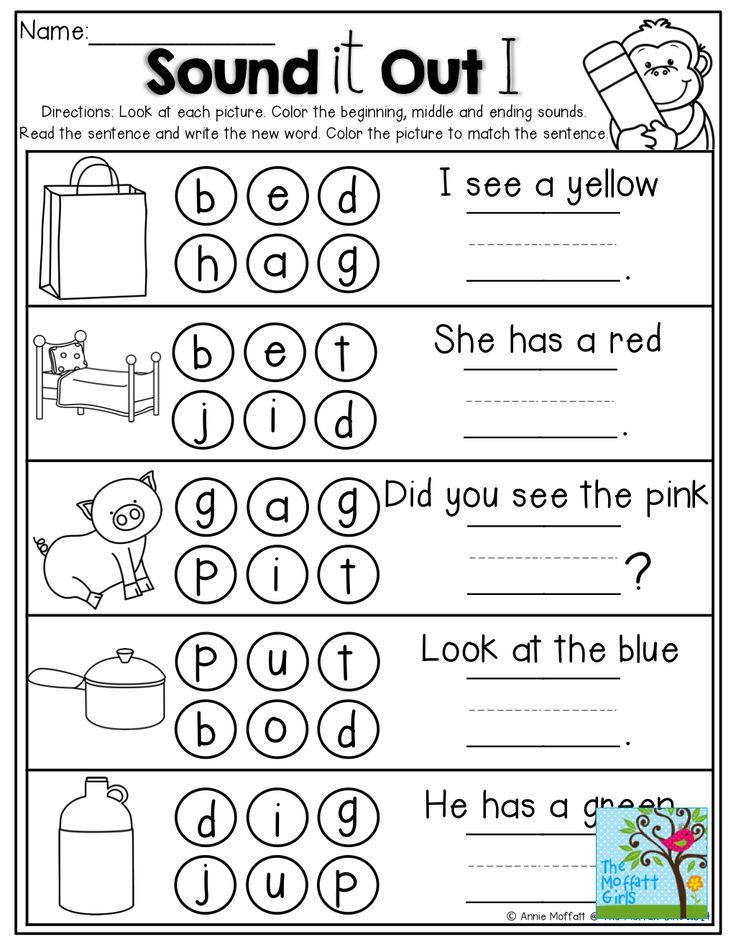 “In such a place, a child can take any thing that he likes. He always has the opportunity to change activities if he is not ready for it, even if he moves away from the regime a little. For example, if there is a lesson in mathematics, but one of the children does not want to, he should be given the opportunity to do something else, ”says the teacher. He agrees with the opinion that0003 environment can become the third educator for the child and the process of adaptation in a space that the child likes and created especially for him will go much better.
“In such a place, a child can take any thing that he likes. He always has the opportunity to change activities if he is not ready for it, even if he moves away from the regime a little. For example, if there is a lesson in mathematics, but one of the children does not want to, he should be given the opportunity to do something else, ”says the teacher. He agrees with the opinion that0003 environment can become the third educator for the child and the process of adaptation in a space that the child likes and created especially for him will go much better.
D on ’ t panic
Successful adaptation to kindergarten is important for everyone: the child, parents and caregiver. If possible, experts advise not to rush each other too much and not to forget who is an adult in this situation and who is not.
“One can wish for peace of mind and acceptance of new life circumstances at a more relaxed pace.